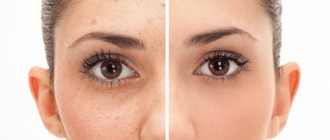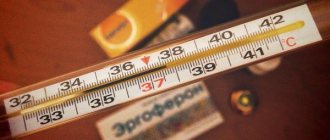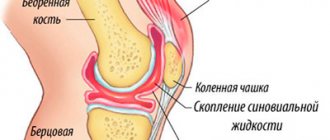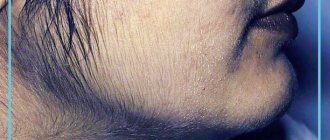Fat deposits are something that people have to fight with all the time. They worry if such accumulations begin to bulge somewhere. At the same time, as experts note, each person is characterized by one or another amount of fat, and there are also standard areas where it accumulates most often and the most - for example, in women these are the thighs and abdomen.
Fat is a source of energy for the body. But to avoid excess in one place, the body deposits the excess obtained during the digestion of food throughout the body. Experts note that there are three types of fat:
- subcutaneous;
- visceral;
- intramuscular.
The first option is the first to go during physical exercise. The second is deposits around internal organs, as a result of which it is considered quite dangerous. The third option - fat deposited inside muscle fibers - is less common.
It is subcutaneous fat that is distributed throughout the body during various malfunctions of the body. Many people tend to attribute the accumulation of deposits to hormonal imbalances. At the same time, not everyone knows which hormone can provoke deposits where - but there is a connection. Gynecologist-endocrinologist Evgenia Nazimova told AiF.ru about which hormones store fat deposits in the body .
What types of fat are there in the human body, and how do they differ from each other?
Modern people are concerned about the percentage of fat in the body, because we are told that fat is not only unsightly, but also harmful to health.
In fact, everything is a little more complicated.
There are three main types of fat in the human body:
- white subcutaneous fat;
- brown fat;
- visceral (internal) fat.
Brown fat is generally a very healthy type of fat; it regulates the functioning of hormones. Normally, it is 1–2% of the total amount of fat in the human body.
White subcutaneous fat is the same rolls on the sides (of course, if there is excess fat). It makes up approximately 90% of the total fat. In general, we need this fat as a source of energy and protection from the cold, and although in excess it has a bad effect on appearance, subcutaneous fat is not only not harmful to health, but also regulates metabolism and prevents the development of diabetes. This is why a fat person can be quite healthy.
The most insidious type of fat is visceral. It is located inside the abdominal cavity, enveloping the internal organs. Moreover, it can be contained in excess in the body not only of an overweight person, but also of a completely slender and even thin person.
What will help you remove excess belly fat?
Non-surgical liposuction (lipolysis) Ulfit ( Unfit )
Ultrasonic lipolysis Ulfit is the most powerful procedure aimed at destroying adipocytes - fat cells in the body.
The Ulfit device is based on high-intensity focused ultrasound HIFU. The target for the Ulfit-lipolysis procedure is local fat deposits at a depth of 6 to 20 mm. This is a safe depth; ultrasound will not harm the body. The effect on fat cells (adipocytes) occurs dynamically, by rotating the emitting head in a special cartridge. When the target target is exposed to highly focused ultrasound with a frequency of 2 MHz, heating occurs to 45-55 degrees, which leads to the destruction of the cell membrane of the fat cell. Next, the breakdown of adipocytes (fat cells) begins and, as a result, the breakdown of triglycerides (cell contents) into glycerol and free fatty acids. Destroyed elements of the fat cell enter the extracellular space and are removed by the body using the lymphatic system and immune cells. Replaceable Ulfit cartridges allow you to work with different thicknesses of fat deposits and their location, removing up to 40% of fat at a time, which is identical to reducing body volume to 5-8 centimeters. Ulft allows for sculptural correction, that is, removing excess fat exactly where it is needed.
Ulfit therapy is carried out without any radical intervention in the body. It has a minimum of contraindications and restrictions. It is held at any time of the year. Suitable for patients of all ages and with varying degrees of body fat. The procedure, if necessary, is carried out under topical anesthesia and does not require a rehabilitation period. That is, immediately after the procedure you can do the necessary things.
Kuznetsova Ekaterina Olegovna
Nutritionist, gastroenterologist, cosmetologist
Non-surgical liposuction Cellu Program
Cellu Program is another ultrasound system, but it appeared much earlier than Ulfit. Today it is very popular all over the world.
Its main task is to combat deep fat deposits. But at the same time, it removes both superficial fat and cellulite, since the Cellu Program apparatus combines high and low ultrasound frequencies. Low waves of the device penetrate the skin to a depth of 2-3 cm, eliminating fat deposits and cellulite, and high waves penetrate to a depth of 7-9 cm and dissolve deep (abdominal) fat deposits. Through a complex reflex system, they trigger the process of internal fat breakdown - lipolysis. It liquefies the contents of the fat cell and releases it into the intercellular space. Fat breakdown products are eliminated by the body naturally through lymphatic capillaries. In order to speed up their elimination, lymphatic drainage procedures are used. In one procedure, you can lose up to 2-3 kilograms of internal fat, which will immediately reduce the harmful load on all internal organs and restore ease of movement. And during the course you can get rid of up to 25(!) kilograms of excess fat.
Important! The ultrasound used in the device normalizes the functioning of the nervous and endocrine systems of the body. And when these important systems are normal, metabolism also normalizes. Extra pounds stop appearing, a person feels light and energized. As a result of normalization of metabolism, a consistent decrease in the amount of internal fat begins. At the same time, blood vessels are cleansed of cholesterol, which reduces the risk of strokes and heart attacks. The defocused ultrasound used in the device acts exclusively on fat cells and has no effect on blood vessels and nerve endings. Therefore, the procedure is safe. There will be no painful sensations either. The risk of infection and damage to the upper layers of the skin is eliminated. After the procedure, the patient immediately returns to his daily activities. Good results can be achieved in patients with different amounts of adipose tissue and body mass index. With the help of Cellu Programs you can get rid of even very voluminous fat deposits.
Myostimulation Isogei (Izojei)
This is targeted muscle development and skin tightening. Myostimulation is carried out using an exclusive VIP Line device. The delivery of electrical impulses causes tension in individual muscles without changing their length (stretching). The VIP Line system works muscles in two modes. One corresponds to aerobic exercise, the second to anaerobic exercise. Aerobic exercise is accompanied by increased oxygen consumption, acceleration of metabolic processes and lipolysis - burning of fat deposits. Anaerobic exercise does not involve fat tissue, but intensively “pumps up” the muscles.
Important! Izojay helps create a sculpted and toned body, while the muscles will be elastic, but not like an athlete’s - the body will remain graceful as a woman. In addition, Izojay increases the overall tone of the body, normalizes metabolism, improves oxygen saturation of cells, and tightens the skin.
Myostimulation Transion (Transion)
A technique similar to Izoja, only it is aimed at twisting muscles. This is necessary not only to cause their tension, but also to remove excess intercellular fluid. This is especially good in cases where excess volume and weight are associated with swelling and fluid accumulation. Applying short electrical impulses to muscles causes them to tense up, which means they burn calories. This is an absolute factor in weight loss. Muscle tension increases their tone, which means it tightens the body and improves its contours. And finally, the procedure has a powerful lymphatic drainage effect. This means that the intercellular fluid, which is saturated and contaminated with waste, toxins and metabolic products, leaves the muscle tissue. In its place comes clean, new intercellular fluid. Muscles are cleansed, metabolism and cellular nutrition are improved. This means not just figure correction, but real body rejuvenation!
Important! The technique is an alternative to classic training in the gym. At the same time, there are no consequences in the form of excessive stress on the heart, fatigue, pain and muscle spasms.
How to Tell If You Have Excess Visceral Fat
MRI allows you to accurately assess the situation, as well as calculations using a special formula, but you can roughly understand how things are going with your internal fat at home. There are several methods:
- The easiest way is to measure your waist circumference. For women, a value of more than 84 cm should cause concern (some sources indicate 88 cm), for men - 94 cm (some sources indicate 100 cm).
- The second way is to calculate your waist to hip ratio. To do this, measure the circumference of the waist and hips and divide the first value by the second. Women should normally get a number in the range from 0.65 to 0.78. A value of 0.85 or higher indicates excess visceral fat. In men, it is indicated by a value above 1.
- Measure neck circumference at the narrowest point. It would seem, what does the neck have to do with it? But there is evidence that neck circumference is a more accurate predictor of diabetes and heart disease risk than waist circumference. Normally, the neck circumference at the narrowest point in women should not exceed 34 cm, and in men - 38.8 cm.
How to get rid of internal fat?
The accumulation of excess visceral fat can have disastrous consequences, so it is important to change your diet and lifestyle as soon as possible. General weight loss can help solve the problem and maintain health.
What should you think about first when fighting internal fat?
Sport
Fortunately, visceral fat is extremely sensitive to exercise, diet and lifestyle changes.
If possible, you should exercise for at least 30 minutes every day. In this case, circuit training is ideal. They are universal, can be performed without additional equipment and equipment and provide fat loss with minimal muscle atrophy.
Don't overdo exercises that only target the problem area. Local weight loss is excluded in this case. Perform exercises that will involve all muscle groups, including exercises for the legs, arms, back, buttocks, etc.
For a long time, there have been disputes among experts as to which exercises are more effective in the fight against internal fat - cardio or strength training. But much of the research, including an analysis of 15 studies involving 852 people, found that moderate-to-high-intensity aerobic exercise had a greater effect on visceral fat than low-intensity aerobic exercise or resistance training.
Additionally, there is a separate study that found that aerobic exercise can help you lose visceral fat even without dieting.
Healthy sleep
To date, approximately 50 studies conducted in different geographic regions have examined the effect of sleep on obesity in adults and children. Most found a significant association between short sleep (less than 6 hours per night) and an increased risk of obesity. An observation of 56.5 thousand people aged 18 to 85 years showed that if you sleep less than 6-7 hours a day, the likelihood of obesity increases by 6%.
Another six-year study of 293 people found that increasing sleep from 6 hours or less to 7 to 8 hours reduced visceral fat gain by about 26%.
How to reduce visceral fat? Do not neglect rest and give your body enough time to recover.
Lack of sleep affects the stress hormone (cortisol), which can increase the amount of visceral fat stored in the body. Getting good sleep and reducing the negativity and anxiety in your life will make it easier to lose it. Practice meditation, deep breathing, and the How to Overcome Stress guide to help you find inner answers and better understand yourself.
Fats in foods
Photo by Rachel Park / Unsplash
After everything written above, it is easy to make the erroneous conclusion that for proper nutrition it is enough to avoid saturated fats. When the body metabolizes food, not only the content and type of fat plays a role, but also other nutrients, such as protein and fiber.
If you eat a steak, your body will only receive proteins and fats. But fiber, or dietary fiber, is also necessary for healthy digestion. They slow down the passage of food through the gastrointestinal tract, help vitamins be absorbed, nourish intestinal bacteria, and also regulate peristalsis.
Everything you need to know about fiber
A diet high in animal fats, proteins and simple sugars is considered Western. This style of nutrition leads to a decrease in microbiota diversity, which is manifested by the predominance of Bacteroides. In the Atlas Microbiota Test, such a profile is called “Big City Resident”.
The Atlas microbiota test will help you find out your intestinal microbiota profile and receive personalized recommendations for improving it.
Some foods are unfairly considered too high in calories or fat, such as avocados or nuts. In fact, it’s enough just to keep it in moderation. Let's talk about some products.
Avocados Avocados are rich in mono- and polyunsaturated fatty acids and also contain high amounts of fiber and phytonutrients that are beneficial for health and nutrition of gut bacteria.
When avocado is part of a healthy, plant-based diet, it has a beneficial effect on your blood lipid profile. Adding avocados to your meals will help your body absorb fat-soluble vitamins from other foods. In addition, fats take a long time to digest, which gives you a feeling of fullness for a long time and allows you to avoid overeating.
Oily fish This is one of the few foods that many people agree is beneficial. The American Heart Association recommends eating fatty fish at least 2 times a week. Oily fish include salmon, salmon, cod, sardines, and herring. They contain omega-3 fatty acids, as well as plenty of calcium and vitamin D.
Remember that some fish, such as tuna, king mackerel, and swordfish, can accumulate mercury and other toxins in their bodies. The UK's National Health Service recommends limiting oily fish consumption to twice a week if you are planning, pregnant or breastfeeding.
Dairy Products Although these products contain saturated fat, in moderation they are unlikely to be harmful. Cheeses, cottage cheese and yogurt contain large amounts of protein, vitamins, as well as omega-3 unsaturated fatty acids and probiotic bacteria: Lactobacillus and Bifidobacterium.
Soft cheeses, such as brie, blue cheese, and camembert, usually contain more fat. But these fats also include linoleic acid, which has anti-inflammatory properties, helps control weight and reduces the risk of cardiovascular disease.
Eggs Cholesterol in egg yolks was thought to be bad for cholesterol levels in the body and increase the risk of heart disease. Now alternative points of view have emerged.
Before 2015, the Dietary Guidelines for Americans recommended limiting cholesterol to 300 milligrams per day. The updated document does not contain this limitation. The UK's National Health Service also does not limit the number of whole eggs per day, but recommends cooking them without adding salt or fat.
One egg yolk contains 200–300 milligrams of cholesterol. Harvard Medical School advises limiting yourself to one whole egg per day and using whites from other eggs if desired. This especially applies to those who have problems with blood cholesterol levels.
Despite conflicting opinions, you should not completely exclude eggs from your diet. They contain important nutrients for maintaining health: proteins, folic acid and some vitamins.
Nuts and seeds Nuts and seeds are rich in vitamins, plant protein, fiber and unsaturated fatty acids, including omega-3. Due to their high fiber content, nuts and seeds keep you feeling full for a long time, and their high content of beneficial microelements reduces the risk of developing cardiovascular diseases and type 2 diabetes.
Make a note:
- The daily intake of fat in the diet should be no more than 20–35%.
- Fats are needed for the absorption of vitamins A, D, K, E.
- The process of fat breakdown occurs in the small intestine.
- It is better to replace saturated fats with unsaturated ones: fish, vegetable oils, nuts, seeds.
- Industrially produced trans fats should be avoided.
Sources:
- Laura Cassiday, Big fat controversy: changing opinions about saturated fats, 2015
- A Guide to the Different Types of Fat, 2015
- Fat: the facts
- Types of fat
- Thomas ABSanders, Functional Dietary Lipids, 2016
- Functions, Classification And Characteristics Of Fats, 2014
- Digestion and Absorption of Lipids, 2020
- Polyunsaturated Fat, 2015
- Saturated Fat, 2015
- Jun Ho Kim, Yoo Kim, Young Jun Kim, Yeonhwa Park, Conjugated Linoleic Acid: Potential Health Benefits as a Functional Food Ingredient, 2016
- Marla Paul, Higher egg and cholesterol consumption hikes heart disease and early death risk, 2019
- The healthy way to eat eggs
- Chandra L Jackson 1, Frank B Hu, Long-term associations of nut consumption with body weight and obesity, 2014
- Emilio Ros, Nuts and novel biomarkers of cardiovascular disease, 2009
- Fish and shellfish nutrition
- Penny M. Kris-Etherton, William S. Harris, Lawrence J. Appel, Omega-3 Fatty Acids and Cardiovascular Disease, 2003
- FDA, Trans fat
- WHO, Policies to eliminate industrially-produced trans-fat consumption
- Omega-3, 6, and 9 and How They Add Up
- No need to avoid healthy omega-6 fats, 2009
- New evidence that fat cells are not just dormant storage depots for calories
- Adam Drewnowski and Eva Almiron-Roig, Human Perceptions and Preferences for Fat-Rich Foods, 2010
- N.Torres, AEVargas-Castillo, ARTovar, Adipose Tissue: White Adipose Tissue Structure and Function, 2015
- Brooks P. Leitner et al, Mapping of human brown adipose tissue in lean and obese young men, 2017









